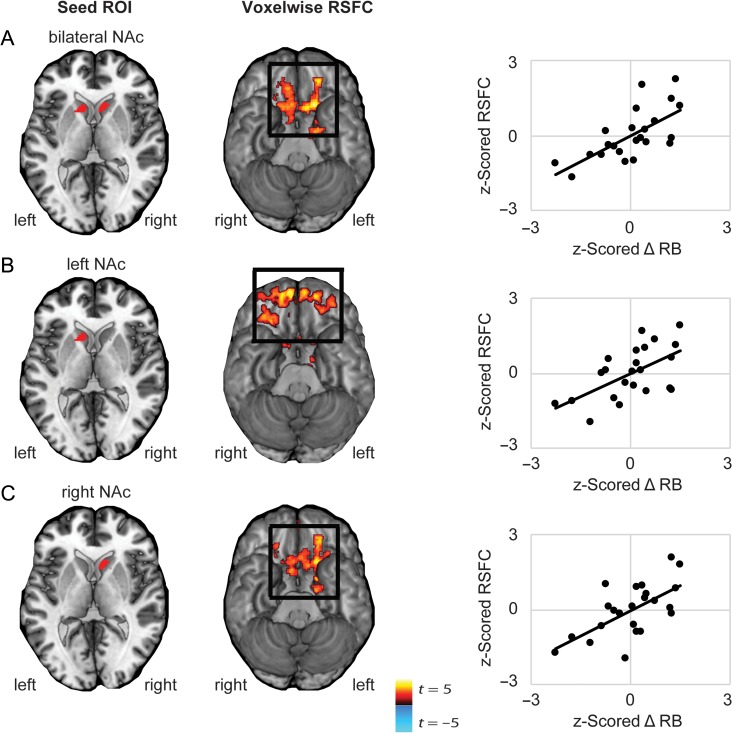Figure 3.
Correlation between reinforcement learning behavior and voxelwise resting-state functional connectivity of left, right, or bilateral NAc. Whole-brain resting-state functional connectivity (RSFC; Fisher’s z-transformed correlation coefficients) was computed for seed regions in either left or right NAc, or bilateral NAc, and correlated with ΔRB (i.e., the increase in response bias towards a more frequently rewarded stimuli across blocks). (A) Better learning behavior was related to increased RSFC between bilateral NAc and regions of orbitofrontal cortex (OFC) (peak −16, 20, −10, k = 1214). Follow-up analyses confirmed that better learning behavior was independently associated with (B) increased RSFC between left NAc and regions of OFC (peak 8, 60, −24, k = 1611), and (C) increased RSFC between right NAc and regions of medial cortex including OFC and (peak −20, 4, −16, k = 2463). Note: Cluster correction performed using peak P < 0.05, FDR; P < 0.05. Displayed are scatterplots showing the correlation between individual differences in z-scored change in response bias towards a reward-rich stimulus and z-scored RSFC between NAc seeds and clusters of effect indicated in black squares.

